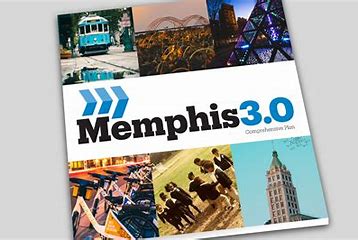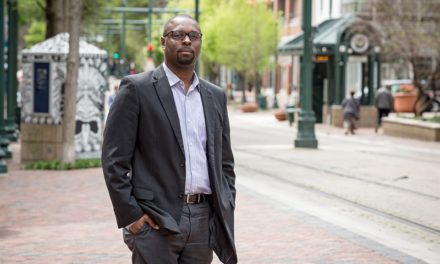It is often said that Memphis has not had a comprehensive plan in 38 years, but that is not precisely true.
It’s been even longer.
That’s because what was approved by City Council and the County Board of Commissioners in 1981 was not precisely a comprehensive plan. It was the 70-page Memphis 2000 Policy Plan.
Rather than being a real comprehensive plan, it was a compilation of 106 recommendations that in appear to be the favorite ideas from five advisory groups with limited public input. The groups were economy, land use, housing, transportation, and public facilities.
In other words, Memphis 2000 Policy Plan bears as much resemblance to Memphis 3.0 as The Pyramid arena is to FedExForum.
Planning’s History
In 1953, the afternoon daily newspaper, Memphis Press-Scimitar, published an editorial, “Give Memphis Real City Planning.” For years, there had been complaints that the city had no plan for the future, and city planning became a major issue in the mayor’s election of 1955. Harland Bartholomew, who had been the city planner of choice since he wrote the comprehensive plan of 1924, developed the first major revision in zoning in 1955.
The good news was that the city and county governments created the joint Memphis and Shelby County Planning Commission, but they didn’t want to pay an adequate salary for planners. It was not until 1962 that a professional, Jerrold Moore, was finally hired, and in the late 1960s, the Planning Commission staff completed its 10-volume “Community Facilities Study,” cataloguing Memphis’ needs through 1990.
And yet, in December, 1976, the Planning Commission was abolished, and in its place, the Land Use Control Board was created and remains in place today. The planning staff, while normally understaffed, managed to produce a number of plans to guide growth. They often produced limited success since politics regularly reared its ugly head.
Then, 39 years ago, city planners unveiled the Memphis 2000 Policy Plan. No one expected in 1981 that it would be almost four decades before the policy plan would be supported with a comprehensive plan that is Memphis 3.0. Back then, it was expected that Memphis 2000 would be updated on a regular basis in light of changing factors and new realities.
It was not to be, and as our community has proven several times over the years, the plan was the outcome – not the policies needed to convert it into reality.
A Crisis Is A Terrible Thing To Waste
When the Memphis 2000 Policy Plan was issued, it was a time of crisis for Memphis.
The old economy of cotton and wood was collapsing and 13 years after Dr. Martin Luther King Jr.’s murder, the city was floundering. Downtown was decaying and potent symbols of that deterioration were the Hotel Peabody and Beale Street. The hotel had gone bankrupt, sold at foreclosure, reopened as a Sheraton hotel, closed again, and sold again on the Courthouse steps. Beale Street was in no better shape – buildings were falling in, the street hardly seemed saving despite a history that Memphians were just as apt to condemn as praise, and the large sign at the entrance to an atrophied street declared that it would be back.
Meanwhile, tourism was an afterthought – if thought of at all – and the Chamber of Commerce lost its headquarters building and was on the verge of bankruptcy. The Center City Commission was only a few years old and at that point, it seemed as much of an exercise in wishful thinking as an impact agency. Meanwhile, Leadership Memphis and Memphis in May were in their infancies and demonstrating modest potential.
As a reflection of the desperation of the times, the Memphis Jobs Conference was launched, created by the first executive order and the promise of $20 million by new governor, Lamar Alexander. The Jobs Conference attracted national speakers, urbanists, and a cross-section of Memphians – from CEOs to neighborhood activists – that set out to craft an economic agenda for the future.
In the wake of the economic transition under way, the consensus was to capitalize on the emerging logistics industry centered on FedEx which opened its World Hub at Memphis International Airport in 1981.
Memphis Jobs Conference
The Memphis Jobs Conference – whose history is regularly misunderstood and misstated on social media – jumpstarted the city’s languishing economy.
Based on the lackluster attention given to the city’s rich potential to become a tourist anchor, it was decided to lobby the Tennessee Legislature for a hotel-motel tax that would allow Memphis to adequately fund the Convention and Visitors so that it can have national and international marketing impact. In support of this, a new convention center hotel was built east of the convention center and Mud Island Park was under construction. Jack Belz took a big risk and reopened The Peabody Hotel, whose recent history included foreclosure, auction on Courthouse steps, and another foreclosure.
Meanwhile, it was decided to capitalize on the region’s agricultural heritage but to transition it more to ag research, technology, and specialized meetings and seminars. That produced state funding and the construction of Agricenter International. Then too, the Orpheum Theater refurbishment and Beale Street also received part of the state’s $20 million – which was divided based on the recommendation of a process covered extensively by the news media.
Today, some people attack the Jobs Conference for concentrating too much on low-income jobs, but hindsight is always 20-20. Our regional economy was on the verge of collapse and national coverage of the city had been brutal.
It’s easy now to understand the impact of concentrating on industries relying on low-skill jobs – although FedEx produced thousands of good paying jobs –but in truth, the mistake about low-skill jobs was not made at the Jobs Conference but about 20 years later. That was when economic development agencies should have produced a plan to transition from a workforce of the 1980s to one that would be competitive in the knowledge and technology economy of the 21st century.
It never happened and we have been playing catch-up ever since, and despite the cheerleading about momentum, our key regional economic indicators place us on the bottom of the listings for the 50 largest metros.
In other words, the lack of consistent and anticipatory planning was not just limited to comprehensive plans of the Office of Planning and Development; however, the lack of the expected check-ins every five years or so of Memphis 2020 contributed to a lethargy that undermined new thinking and alternative scenarios for the future.
No Culture of Planning
With a 40-year vacuum between plans, it’s little wonder that Memphis 3.0 was greeted with skepticism and even conspiracy theories.
Without a culture of planning, Memphis was largely unacquainted with what a comprehensive plan is supposed to be. As a result, some people were suspicious that it was deciding which neighborhoods were winners and which were losers. Others saw it as a stick rather than a carrot or that it would result in special treatment by city departments of some neighborhoods.
Without a consistent planning implementation culture that has been crucial to the progress of many of our regional rivals, it was not clear to many Memphians that a comprehensive plan is an undertaken by every major city in the U.S. but on a more regular basis than Memphis.
Memphis 3.0 was approved by Memphis City Council as 2019 drew to a close and it is now the official framework for policy decisions and capital spending. That does not mean that it does not have to prove itself to skeptics and neighborhood activists.
The ultimate factor in whether Memphis 3.0 succeeds is if it backed by the political will it needs to have impact. The key question: does it really become the blueprint to a more equitable city whose land use contributes to more opportunity and stimulates investment in all neighborhoods or is it ignored after a few years and becomes another worthy effort that promised more than it delivered?
The Big Risk: Lack of Political Will
There is always the risk in too much politics being injected into its recommendations. Already, some Council members thought that 3.0 took away some of its power – although it doesn’t. We’ll know that City Hall is seriously dedicated to Memphis 3.0 if the mayor and Council tie its capital improvement budget to it.
After all, for decades, all departments and division of the City of Memphis have been required to present their capital improvement projects to the Office of Planning and Development for input and evaluation. Despite that written requirement, it has not taken place, which raises the question of whether Memphis 3.0 can actually drive and inspire city policy or whether it will be relegated to talking points in political speeches with little follow-up.
There have been times in recent years when reactions to Memphis 3.0 weren’t too far from the Agenda 21 conspiracy-minded who saw smart growth as “the most dangerous threat to America’s sovereignty…(and) the destruction of our lives.
Here’s the thing: Memphis 3.0 is a living document rather than a rigid one that is not resilient and flexible as changing forces and events emerge. Perhaps, the term, comprehensive planning, suggests to some that it is more than it is – a land use plan that intends to guide livability, sustainability, and equity.
Imagining a Better Future
It is a tall order for Memphis 3.0, and expectations are high.
But one thing is certain: Memphis will not become the city that it envisions if there is no plan for the future and if the comprehensive plan is not reviewed and updated every five years or so.
We’ve seen over the past 40 years what happens when there is no plan: there was unbridled sprawl that pushed Shelby County Government to the brink of bankruptcy and with no planning context, City of Memphis failed to consider what it should be doing to strengthen its neighborhoods with smart investments, wise policies, and effective programs. That more than PILOTs to politically influential developers for apartments can attract new residents and keep young people here.
Even more profoundly, 40 years later, white income remains twice African American income, the poverty rate remains stubbornly high, and the child poverty rate has climbed to its current catastrophic levels.
Improving neighborhoods, connected by public transit, and with increased opportunity are not in and of themselves the panacea for these structural challenges, but if it can inspire new perspectives of what can be rather than what is, Memphis 3.0 can be a major step toward a better future that Memphis needs.
***
Join us at the Smart City Memphis Facebook page for daily articles, reports, and commentaries relevant to Memphis.





Absolutely dead on assessment of planning in the city of memphis. I still have a copy of the memphis 2000 policy plan. dont think the library does….